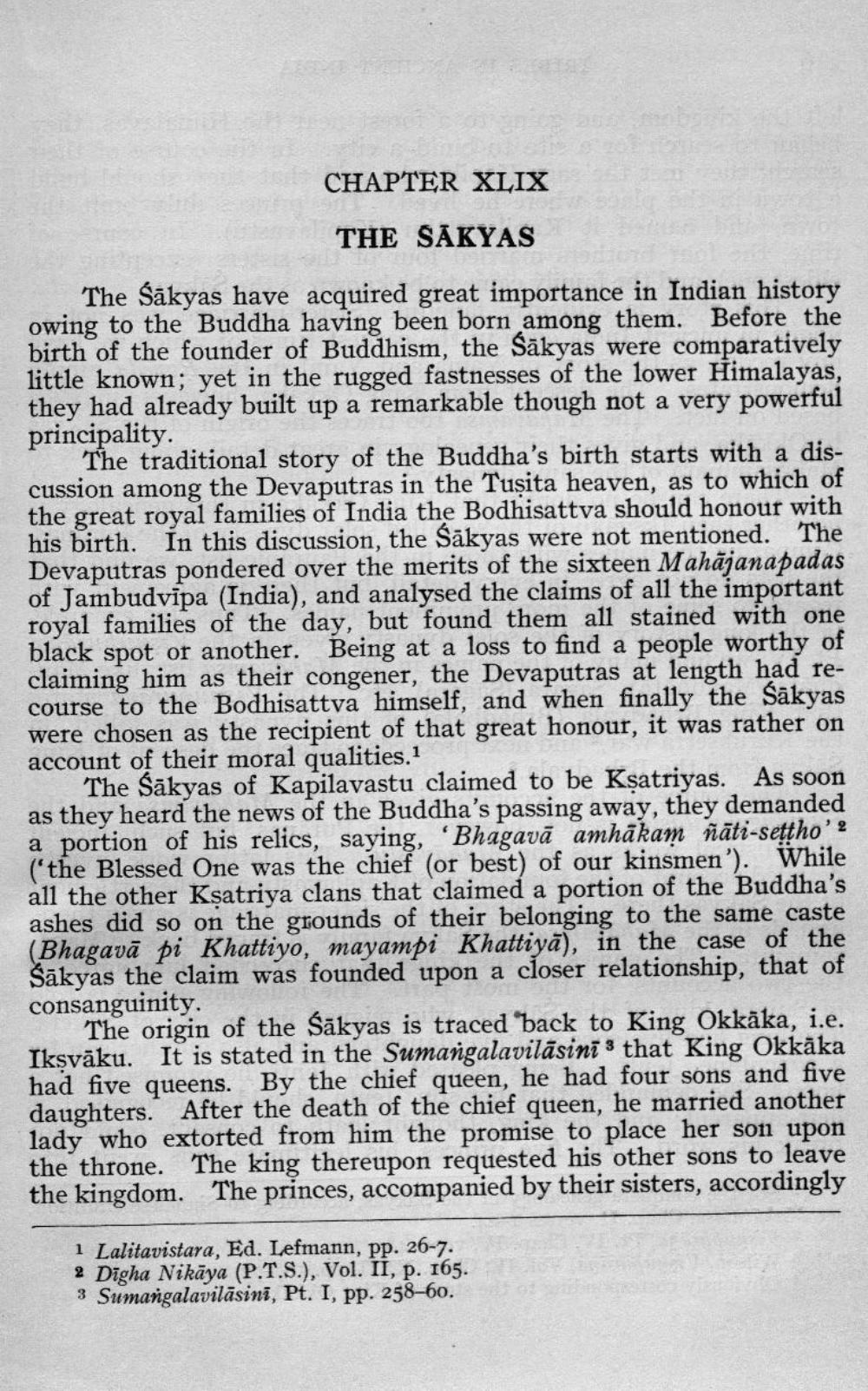________________
CHAPTER XLIX THE SĀKYAS
The Sākyas have acquired great importance in Indian history owing to the Buddha having been born among them. Before the birth of the founder of Buddhism, the Sākyas were comparatively little known; yet in the rugged fastnesses of the lower Himalayas, they had already built up a remarkable though not a very powerful principality.
The traditional story of the Buddha's birth starts with a discussion among the Devaputras in the Tuşita heaven, as to which of the great royal families of India the Bodhisattva should honour with his birth. In this discussion, the Sākyas were not mentioned. The Devaputras pondered over the merits of the sixteen Mahājanapadas of Jambudvīpa (India), and analysed the claims of all the important royal families of the day, but found them all stained with one black spot or another. Being at a loss to find a people worthy of claiming him as their congener, the Devaputras at length had recourse to the Bodhisattva himself, and when finally the Säkyas were chosen as the recipient of that great honour, it was rather on account of their moral qualities.
The Sākyas of Kapilavastu claimed to be Ksatriyas. As soon as they heard the news of the Buddha's passing away, they demanded a portion of his relics, saying, 'Bhagavā amhākam ñāti-settho'? ('the Blessed One was the chief (or best) of our kinsmen'). While all the other Ksatriya clans that claimed a portion of the Buddha's ashes did so on the grounds of their belonging to the same caste (Bhagavā pi Khattiyo, mayampi Khattiyā), in the case of the Sākyas the claim was founded upon a closer relationship, that of consanguinity.
The origin of the sākyas is traced back to King Okkāka, i.e. Ikşvāku. It is stated in the Sumangalavilāsinīs that King Okkāka had five queens. By the chief queen, he had four sons and five daughters. After the death of the chief queen, he married another lady who extorted from him the promise to place her son upon the throne. The king thereupon requested his other sons to leave the kingdom. The princes, accompanied by their sisters, accordingly
i Lalitavistara, Ed. Lefmann, pp. 26-7. 2 Digha Nikāya (P.T.S.), Vol. II, p. 165. 3 Sumangalavilāsini, Pt. I, pp. 258–60.




